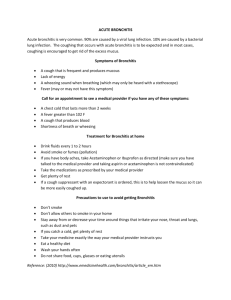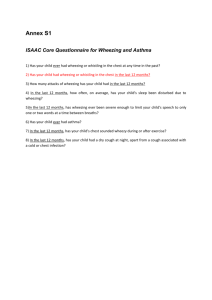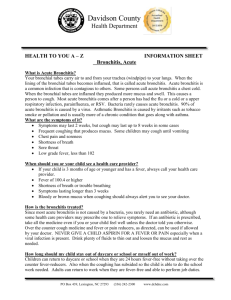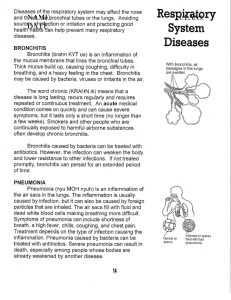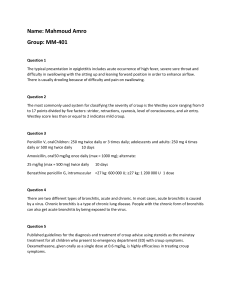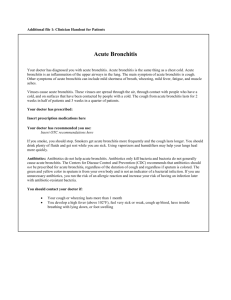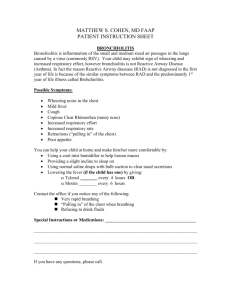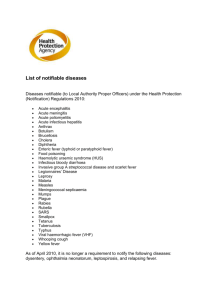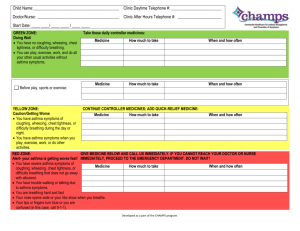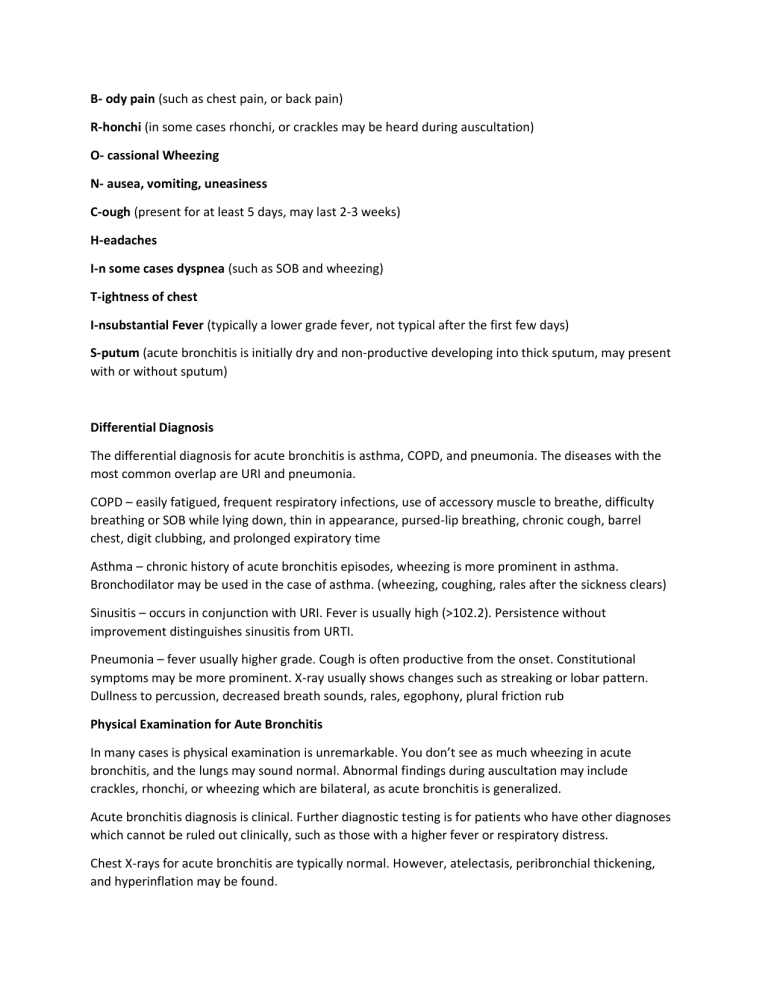
B- ody pain (such as chest pain, or back pain) R-honchi (in some cases rhonchi, or crackles may be heard during auscultation) O- cassional Wheezing N- ausea, vomiting, uneasiness C-ough (present for at least 5 days, may last 2-3 weeks) H-eadaches I-n some cases dyspnea (such as SOB and wheezing) T-ightness of chest I-nsubstantial Fever (typically a lower grade fever, not typical after the first few days) S-putum (acute bronchitis is initially dry and non-productive developing into thick sputum, may present with or without sputum) Differential Diagnosis The differential diagnosis for acute bronchitis is asthma, COPD, and pneumonia. The diseases with the most common overlap are URI and pneumonia. COPD – easily fatigued, frequent respiratory infections, use of accessory muscle to breathe, difficulty breathing or SOB while lying down, thin in appearance, pursed-lip breathing, chronic cough, barrel chest, digit clubbing, and prolonged expiratory time Asthma – chronic history of acute bronchitis episodes, wheezing is more prominent in asthma. Bronchodilator may be used in the case of asthma. (wheezing, coughing, rales after the sickness clears) Sinusitis – occurs in conjunction with URI. Fever is usually high (>102.2). Persistence without improvement distinguishes sinusitis from URTI. Pneumonia – fever usually higher grade. Cough is often productive from the onset. Constitutional symptoms may be more prominent. X-ray usually shows changes such as streaking or lobar pattern. Dullness to percussion, decreased breath sounds, rales, egophony, plural friction rub Physical Examination for Aute Bronchitis In many cases is physical examination is unremarkable. You don’t see as much wheezing in acute bronchitis, and the lungs may sound normal. Abnormal findings during auscultation may include crackles, rhonchi, or wheezing which are bilateral, as acute bronchitis is generalized. Acute bronchitis diagnosis is clinical. Further diagnostic testing is for patients who have other diagnoses which cannot be ruled out clinically, such as those with a higher fever or respiratory distress. Chest X-rays for acute bronchitis are typically normal. However, atelectasis, peribronchial thickening, and hyperinflation may be found.
